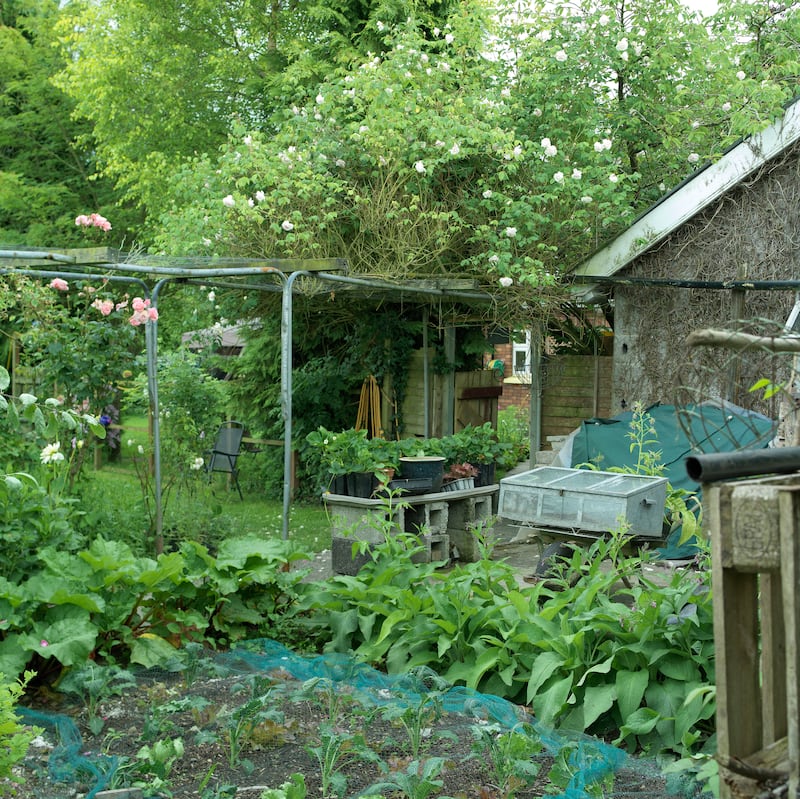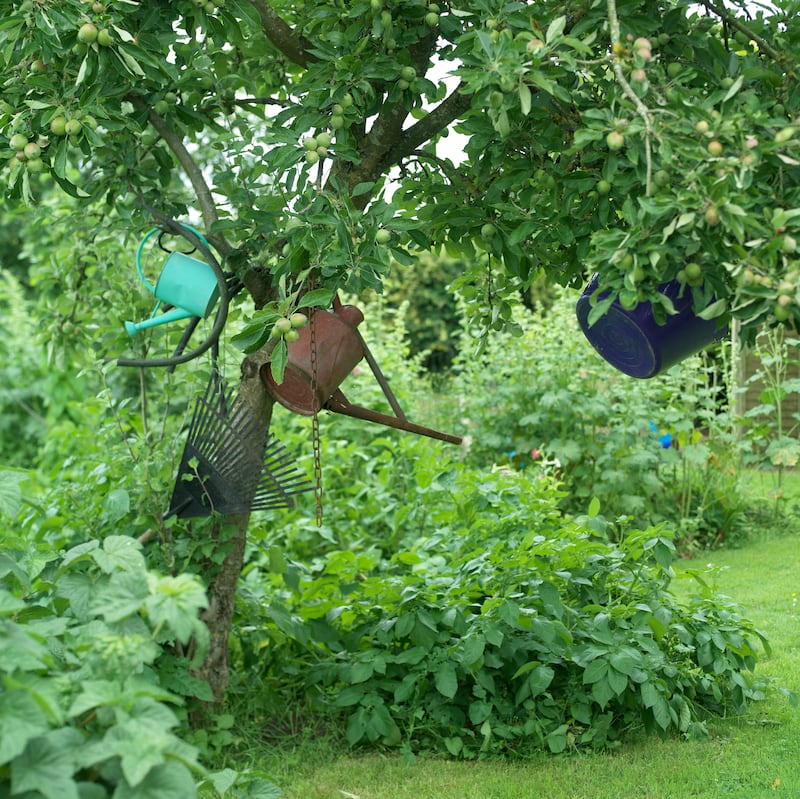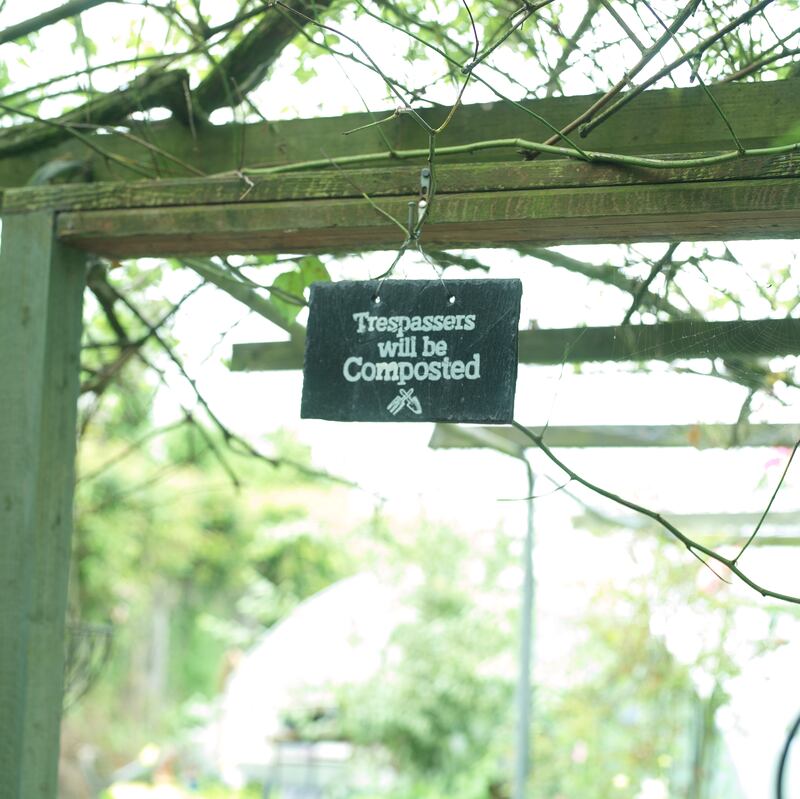In a world shaken by the cost of living crisis, growing some of your own food has never made more sense. For Laois man Brendan Sheppard, whose impressively productive, pretty 0.2 hectare plot, is situated on the edges of Durrow village, it’s also second nature.
Now retired, this soft-spoken gardener, beekeeper and keen fisherman, comes from a generation of Irish people for whom kitchen gardening and some degree of self-sufficiency were the norm growing up. Situated to the rear of the handsome family home that he built himself, and where he lives with his wife Maureen, his thriving vegetable garden is living, leafy testimony to his horticultural skills. Its engine room is the domestic polytunnel that sits to one side of the plot. “What would we Irish gardeners do without our polytunnels?” he muses. He says it has revolutionised the way he gardens in terms of extending the growing season at either end.
Inside its waterproof shell of metal struts and taut plastic skin, fat clusters of ripening grapes dangle from the supporting bars, and tomatoes swell in the humid heat. Average daytime temperatures in its protected environment are many degrees above what they are outdoors, allowing Sheppard to successfully grow a wide range of heat-loving crops that thrive in its warm, dry, sheltered conditions including sweetcorn, Cavolo Nero kale and salad crops.
This is also the place where he raises many seedlings in spring as a way of getting a jump on the growing season. A shining example is his truly impressive crop of parsnips. Despite the fact that it’s still early summer, the plants are already knee-high, having been raised from seed sowed into deep modules, under cover in early spring, and then transplanted outdoors as baby plants. “It makes a huge difference to the speed of germination as well as the size and vigour of the plants.”
READ MORE
[ I thought beekeeping would be easy. The bees had other plansOpens in new window ]


Next to them, purple-skinned French bean plants clamber up tall poles, onions, strawberries and courgettes ripen in the summer heat, and scarlet nasturtiums scramble across the soil while the first few lines of what will be a substantial potato crop wait to be harvested. Favourites of Sheppard’s include the waxy variety known as “Charlotte”; the red-skinned, floury “Duke of York”; and the heirloom “Sharpe’s Express”, that mature quickly. cooking and eating varieties of apple trees also flourish in this garden, creating a leafy canopy and lending a charming feeling of maturity to the planting, as does its thriving rhubarb patch. Another sunny corner is reserved for his flock of chickens, which keep the couple stocked with fresh eggs.
An organic gardener by instinct, Sheppard’s love of nature and naturally enterprising disposition had led him to devise many clever ways of keeping his plants free of pests and diseases. An example is the lidded container that sits in one corner of his polytunnel, its contents a foul, sulphurous-smelling, gloopy liquid that turns out to be garlic bulbs fermenting in water, which he regularly tops up with fresh cloves.
‘Whenever I spot a plant showing signs of slug damage or insect attack, I sprinkle a little of it on the leaves and that usually takes care of things. They can’t bear the smell of it.” Another favourite is comfrey tea, whose nutrient-rich leaves are traditionally used by organic gardeners as a general plant tonic, either as a mulch or as a liquid foliar feed.
A vigorous perennial that can become invasive if left unchecked, Sheppard uses the sterile hybrid variety known as Bocking 14 (or to give it its Latin name, Symphytum x uplandicum ‘Bocking 14′), which was first introduced into cultivation by the pioneering organic gardener pioneer Lawrence Hills back in the 1950s. Unlike other varieties, it doesn’t set seed meaning that it’s much easier to keep under control. Its blue pretty flowers are also rich in nectar and pollen, another reason why Sheppard, an avid beekeeper for much of his life, likes it so much.
Beekeeping has been a passion of his for almost forty years, “ever since the Christmas of 1983, when I was given the present of an empty hive and a little book- a small, slim Government publication- on the subject. I was instantly hooked”. He got his first honeybees from a beekeeper in Thomastown, Co Kilkenny, and bees have been his constant companions in the garden since. ‘In high summer there could be anything up to 50,000 of them coming and going from the hives.”


Along with the wide range of flowering annuals, perennials, climbers, shrubs and fruit trees that flourish in the garden, they feed on plants that grow in its species-rich boundary hedges and the wildflowers that flourish along its edges. As well as comfrey, some of their favourites include the blossom of the wild blackberry, hawthorn or white thorn as Sheppard calls it, clover and wild field poppies. “They go mad for them, just can’t get enough of them ... The flowers of the horse chestnut and lime trees are another big favourite of theirs, but you need temperature[s] of above 20 degrees for the nectar to really flow.”
A keen observer and admirer of honey bees’ infinitely complex lives and social structures, he points out that the average bee lives for six weeks. “Then their wings wear out and they can’t fly any more, so they die.”
During the pandemic he enjoyed the opportunity to pass his beekeeping skills on to his young grandsons, Brian and Matthew, who now keep their own hives. “I made sure not to fill their heads with facts and figures, which would only have put them off, and instead encouraged them to learn naturally by just watching and helping. The most important thing was that they learned to respect the bees and to work quietly and patiently, while also being relaxed around them.


Sheppard points out that people are often afraid of bees, which the insects then quickly sense. “But as long as you treat them gently and leave them alone in bad weather- they really hate being disturbed if the weather is cold and windy, for example, or if there’s thunder or lightning- and always make sure to wear the right protective clothing, then there’s nothing to worry about”.
Are they time-consuming? “Not really. On average I’d spend a maximum of about 20 minutes per hive per week, so it’s certainly a bit of a commitment, but it doesn’t eat up all my time. And I love having them in the garden as much as I love the honey itself. They’re endlessly fascinating little creatures that could teach us all a lot ...”
This week in the garden
This is the best time of the year to divide and replant overcrowded clumps of bearded irises (Iris germanica). To do this, use a garden fork to gently lift the plant’s fleshy rhizomes out of the ground, being careful not to accidentally damage them as you do so. Then gently tease the clump apart into smaller pieces, discarding the woody centre. Use a sharp, clean knife or secateurs to cut the sword-shaped leaves of each small clump back to half their height. Then plant the individual divisions back into their new positions in the garden as well as one or two back into their original planting hole always to a depth where the upper side of the rhizomes are above soil level and in full sun. Water well and label to avoid accidentally digging them up in winter when the plants are dormant. These heat-loving perennials need a sunny position in a free-draining soil well away from the shade and competition of other plants.
Nutritious, delicious and versatile, brassicas (members of the cabbage family) are important crops in most kitchen gardens and allotments and really benefit from some TLC at this time of year. So make sure to keep them well watered and protected with a fine gauge netting from common pests such as the cabbage white butterfly, checking before you do so that they haven’t already laid their eggs on the undersurface of the leaves. July is also a good time to plant out kale, calabrese and kohlrabi as well as to sow seed of kohlrabi, tulip, radish, and Chinese cabbage, all of which are members of the Brassica family.
Dates for your diary
Sunday, July 16th, (11am-5pm), June Blake’s Garden, Tinode, Blessington, Co Wicklow, a celebration of the opening of this wonderful Wicklow garden’s recently-restored ‘Grinding House’, with an inaugural exhibition of the work of Wicklow artists Bob Lynn and Trevor Geoghegan. The garden is simultaneously celebrating the beauty of the dahlia season and its outstanding collection of over 110 species-type dahlias raised by owner June Blake from seed, see juneblake.ie
Saturday 22nd July (11am-5pm), Belvedere House Unusual Plant Fair, Mullingar Co. Westmeath, with plant stalls by many Irish small specialist nurseries and talks by Irish gardeners Jimi Blake of Hunting Brook Gardens and Paul Smyth of RHSI Bellefield, plus music, food and entertainment, see belvedere-house.ie













